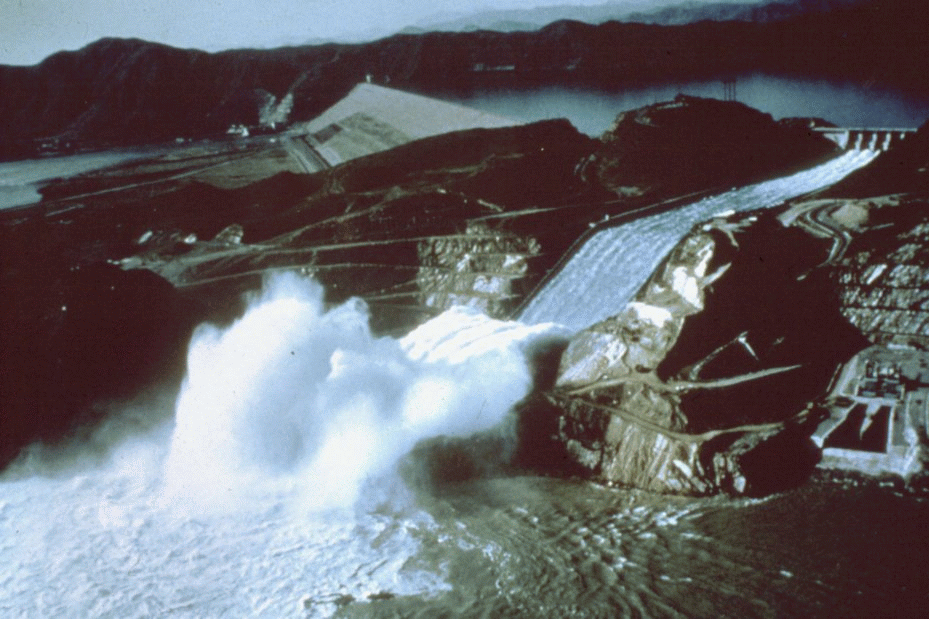


Consequent to the Indus Basin Water Treaty, concluded between India and Pakistan, two major water reservoirs were planned to be constructed in Pakistan to store water mainly for irrigation (to make up for the shortfall of water due to water sharing formula agreed vide the treaty); one of these was o be built on River Jhelm at Mangla and the other on River Indus near the small town of Tarbela. Construction for the dam began in 1968, and continued until completion in 1976. The dam has a volume of 138,600,000 cubic yards (106,000,000 m³). With a reservoir capacity of 11,098,000 acre-feet (13.69 km³), the dam is 469 feet (143 m) high and 8,997 feet (2,743 m) wide at its crest and stands 147 meters above the Indus riverbed.. It helps to maintain the flow of the Indus during seasonal fluctuations. The dam cost in 1976 was Rs.18.5 billion. Its reservoir is 97 km long with a depth of 137 meters while total area of the lake is 260 square kilometers. From the initial storage capacity of 11.62 MAF in 1974, it has now reduced to 5.51 MAF in 2005 (i.e. 47% of initial capacity) due to silting.
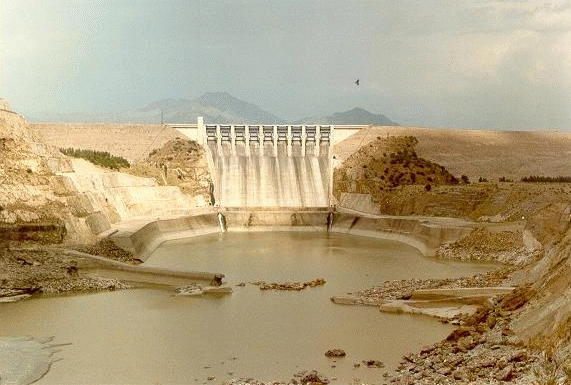
Tarbela is considered as the largest earth-filled dam on one of the world's most important rivers - the Indus. The dam was completed in 1976 at a cost of Rs.18.5 billion. It is the biggest hydel power station in Pakistan having a capacity of generating 3,478 MW of electricity. It provides nearly 30 percent of all the irrigation water available in dry season, 2100 MW of hydropower was to be initially generated as a by-product. By the year 1992, the generating capacity was raised to 3428 MW, with the 3rd extension comprising four more units of 432 MW capacity each. Read More ...
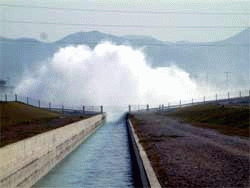
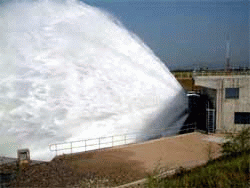
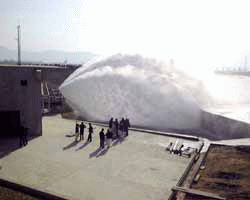
Discharge of water from the Tarbela power generation tunnels
As with the construction of large dams, while the problem of storing water has been achieved for agricultural use in Pakistan, there have been environmental consequences to the Indus river delta. Reduction of seasonal flooding and reduced water flows to the delta have decreased mangrove stands and the abundance of some fish species.
The dam has been plagued with
problems ever since 1974 when the reservoir impoundment began. Two of the
four tunnels being used to control the rate of filling were damaged and
forced to close. Within a week, one of the two remaining active tunnels also
collapsed, bringing down nearly half a million cubic metres of concrete and
rock. The reservoir had to be emptied immediately to avoid a disaster.
Engineers then discovered around 70 "sinkholes" in the reservoir bed, which
they tried covering between 1975 and 1978 by dumping thousands of tonnes of
earth by the barge load. One sinkhole that appeared in 1984 was still there
in 1991 and could affect the permeability of the dam. Downstream of the dam,
a huge 50 metre-deep, 300 metre-wide plunge pool formed in 1976 when the
main spillway began operating. During the following year’s floods, the rocks
at the base of the spillway eroded, threatening the safety of the huge
concrete spillway. The auxiliary spillway had similar problems and the
contractors had to undertake a three-year "rock stabilisation programme".
The rescue works on the Tarbela dam boosted the cost from an estimated $800
million in 1968 to $1.5 billion by 1986. Only continual monitoring, remedial
work and maintenance have stopped the dam from releasing a tidal wave into
the densely populated Peshawar Valley below. By 1999 the Tarbela reservoir
had succumbed to 32% of silting. The sedimentation still continues,
gradually reducing the life of the dam - thus the need to build more dams
for storage of water and meet the increasing demands of electricity.
| TARBELA DAM WEATHER | PAKISTAN WATER GATEWAY |
This page was created on 7 August 2006
![]()
Copyright©JalalsPages - 2005